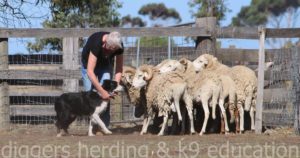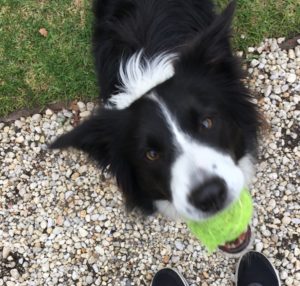
In multiple dog homes, harmonious relationships are common if each dog is treated fairly and if the owners understand dog body language. However, scuffles can occur. Learning how to read your dogs’ cues, especially signs of stress and anxiety, is crucial to maintaining peace in a multi-dog household.
Dogs often communicate through body language, and recognizing stress and anxiety in dogs can prevent fights. Minor disputes among dogs are normal, often sparked by food, toys, or attention from you. These squabbles are usually brief and can be managed with a simple interruption, like saying “Oi, stop that!”
The most common cause of tension in multiple dog homes is resource guarding, where a dog defends food, toys, or even the owner. Other factors include young dogs pestering older ones, pain, or anxiety disorders. Keep an eye on body language and signs of aggression, which often build up over time due to increasing stress.
Common triggers include:
Reducing fights involves managing and minimizing triggers in the home. Some ways to do this include:
In addition to managing triggers, it’s essential to establish house rules. This helps dogs understand boundaries and reduces conflicts, particularly in multiple dog homes. Consider the following tips:
If fights become intense, where a dog intends to harm another, it may be time to seek professional help. Trainers experienced with multiple dog homes can help you implement behavior strategies and restore peace.
Addressing minor issues before they become severe can save you from future conflicts. Waiting too long might lead to permanent separation of the dogs within the home, making reunification challenging.
Finding a qualified trainer with experience in multi-dog households is key to addressing these issues effectively.
By managing triggers, setting boundaries, and understanding dog body language, you can create a peaceful multiple dog home.
Early intervention, balanced attention, and proper training can help your dogs live harmoniously and reduce conflict.
About the Author:
Lara Shannon is a certified dog behaviourist and trainer, pet food nutrition specialist, Executive Producer and Host of Pooches at Play on Channel 10 and editor of Poochesatplay.com. Lara also runs her own dog training business in Melbourne’s Bayside area and is the Author of World of Dogs and Eat, Play, Love Your Dog

The benefit of interactive toys for dogs


The benefits of crate training your dog

How herding training can help with dog behaviour issues

Does your dog have a ball obsession?


Get your paws on Lara Shannon’s best selling books ‘Eat, Play, Love (your dog) and World of Dogs.
Available in Australia, USA, UK and Canada.